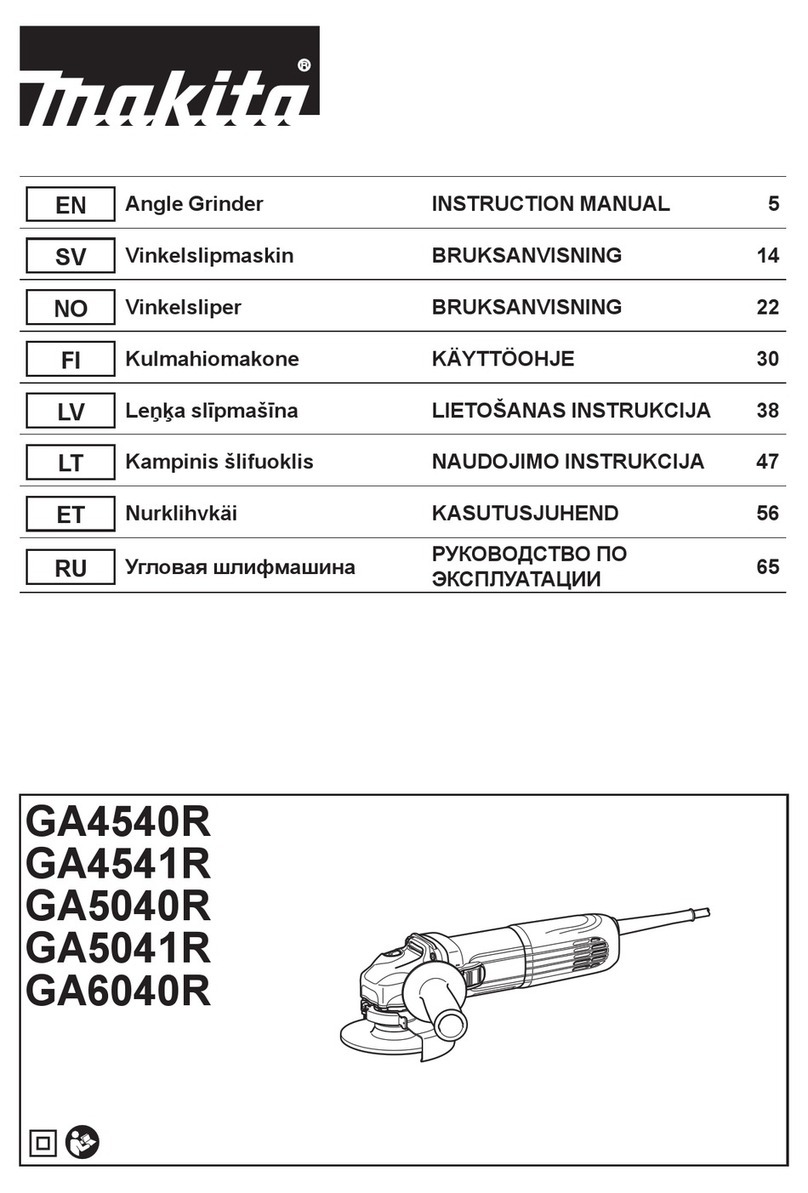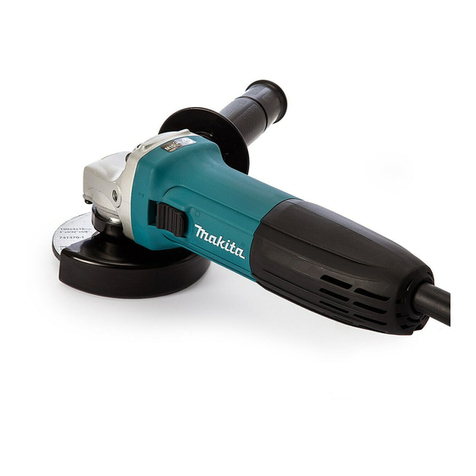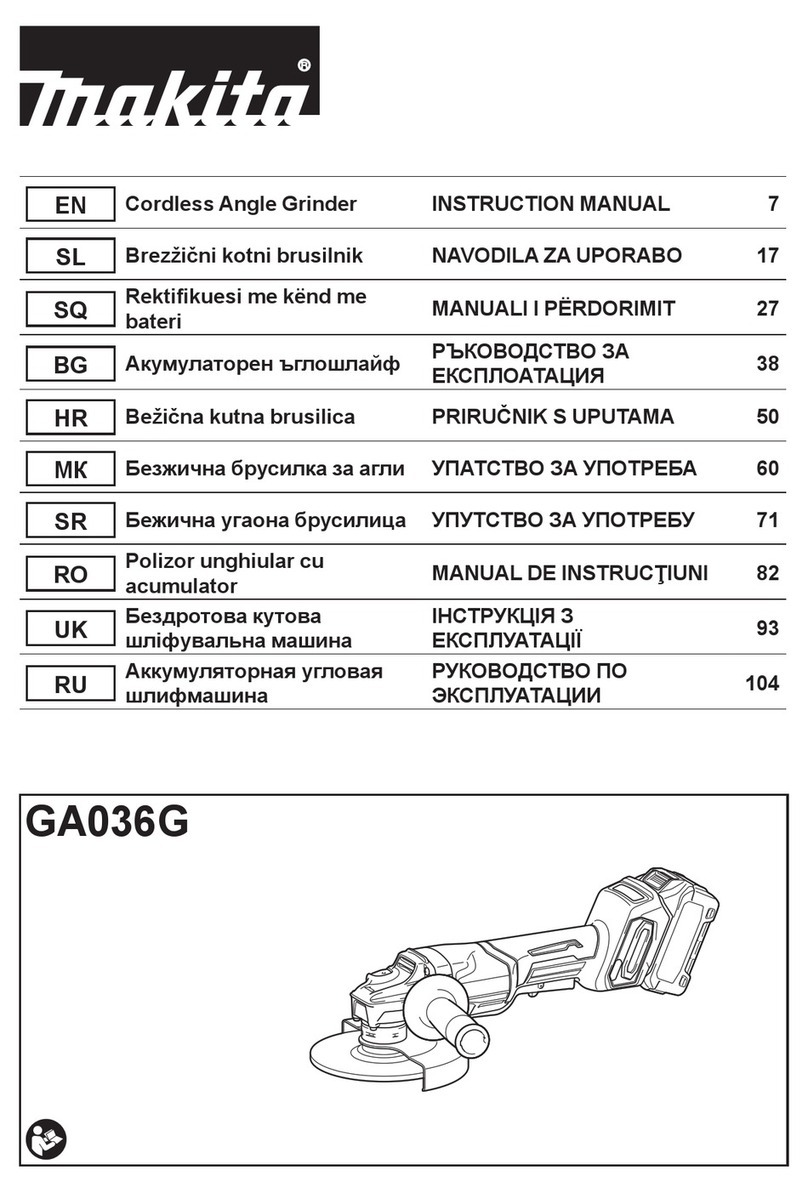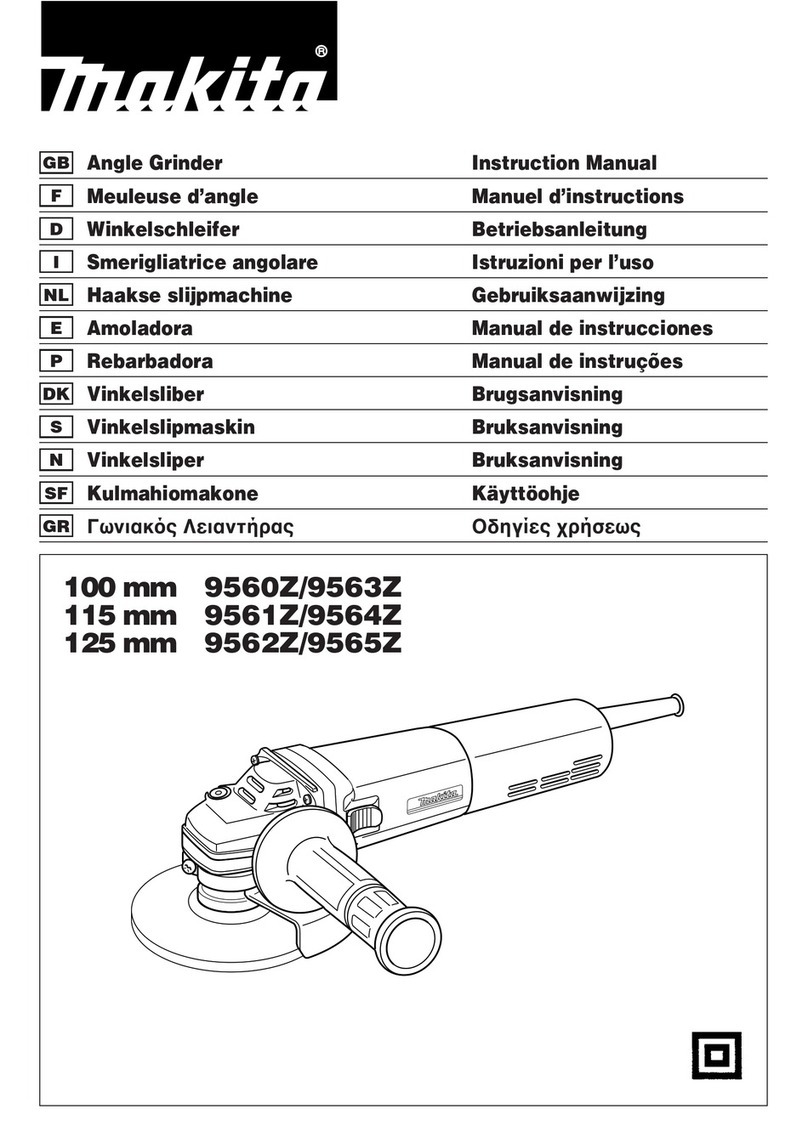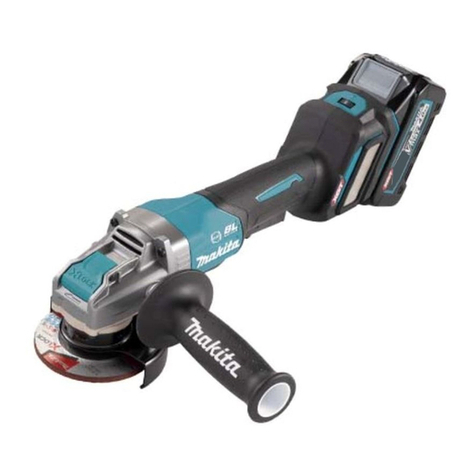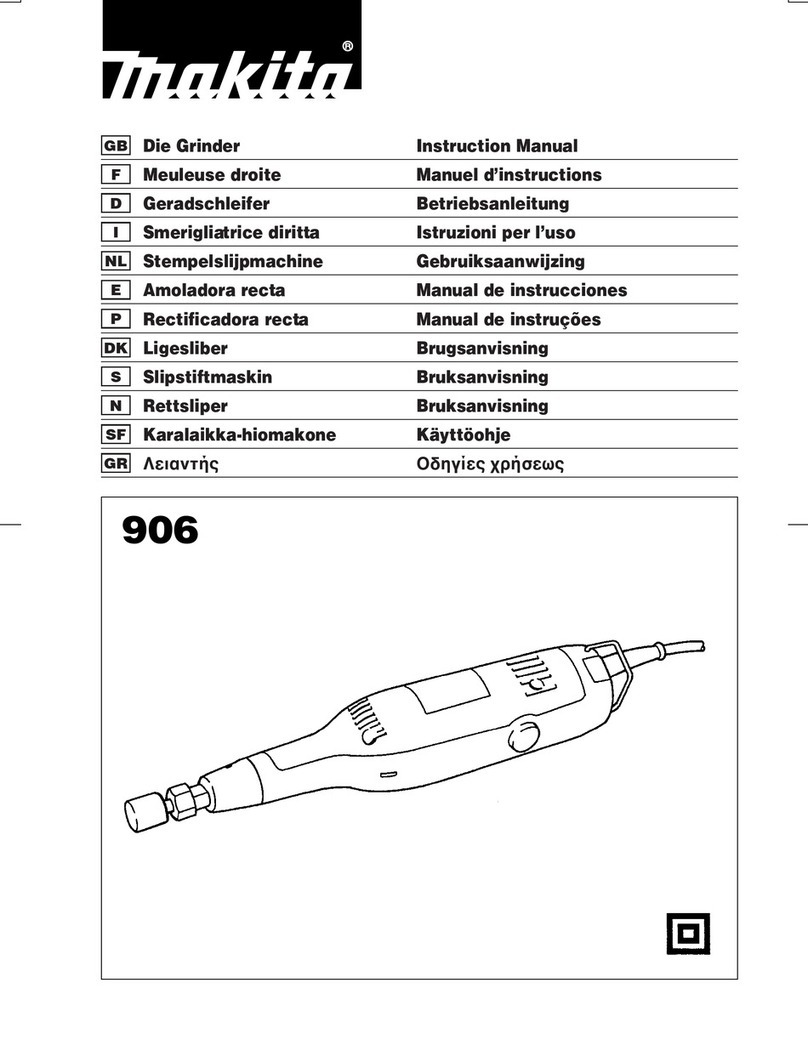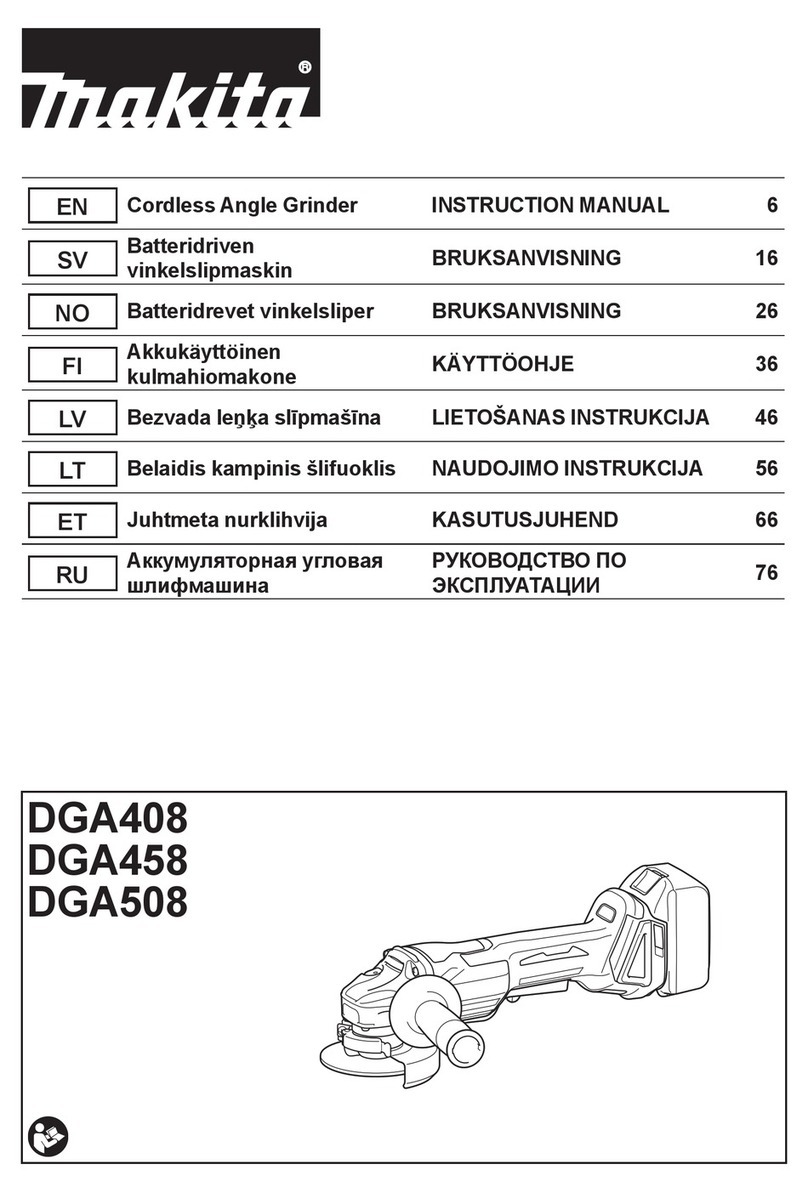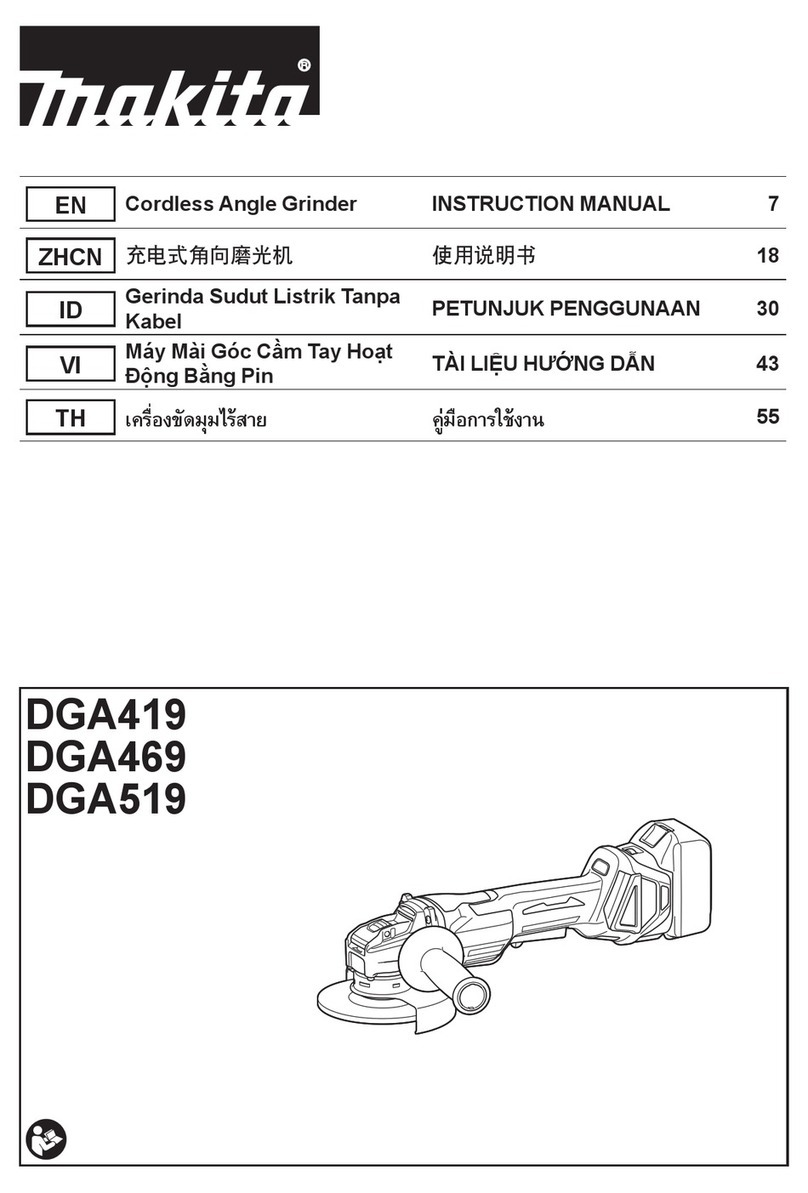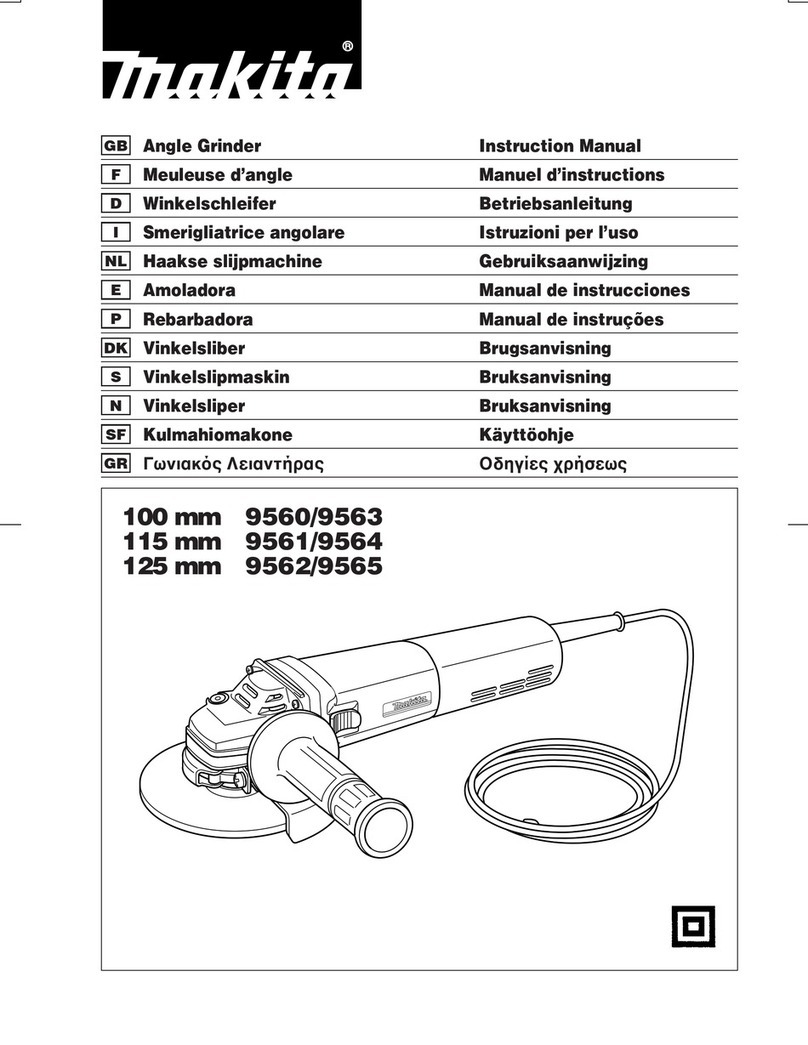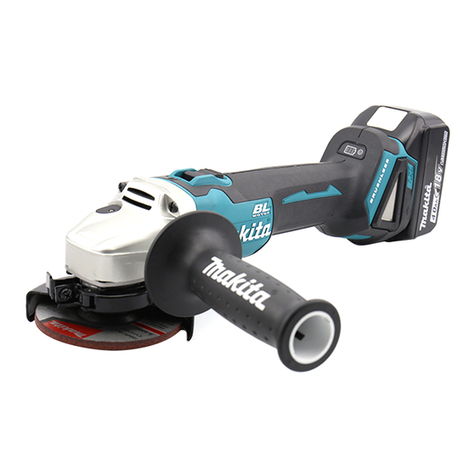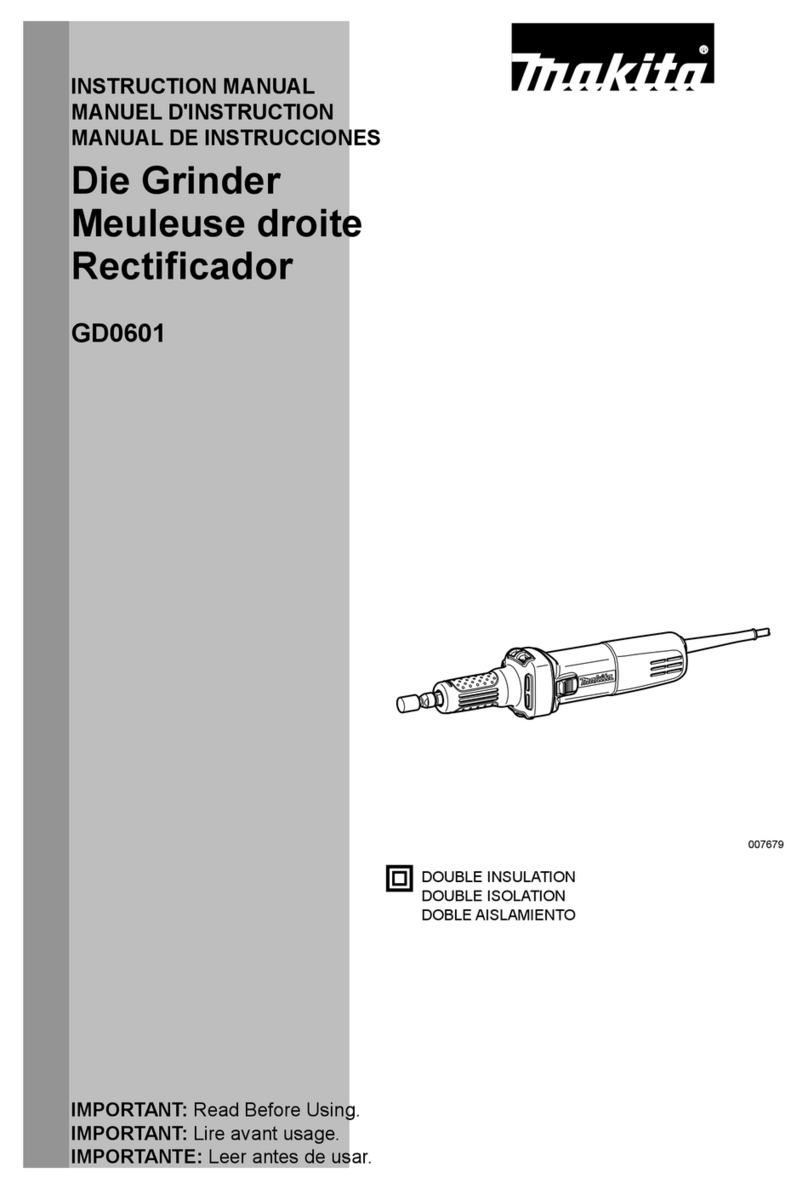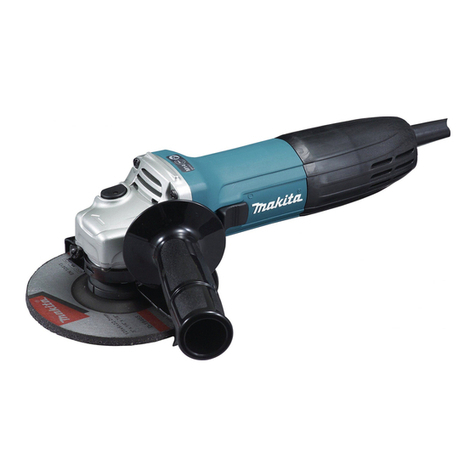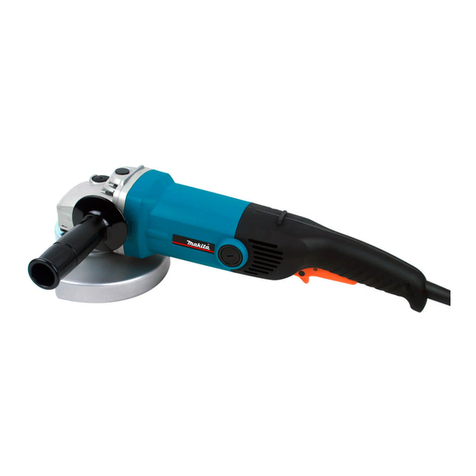
9ENGLISH
Kickback and Related Warnings
-
-
-
1.
position your body and arm to allow you to
resist kickback forces. Always use auxiliary
handle, if provided, for maximum control over
kickback or torque reaction during start-up.
-
2. Never place your hand near the rotating acces-
sory.
3. Do not position your body in the area where
power tool will move if kickback occurs.
4. Use special care when working corners, sharp
edges etc. Avoid bouncing and snagging the
accessory.
5. Do not attach a saw chain woodcarving blade
or toothed saw blade.-
1. Use only wheel types that are recommended
designed for the selected wheel.
2. The grinding surface of centre depressed
wheels must be mounted below the plane of
the guard lip.
3. The guard must be securely attached to the
power tool and positioned for maximum safety,
so the least amount of wheel is exposed
towards the operator.
-
ignite clothing.
4. Wheels must be used only for recommended
applications. For example: do not grind with
shatter.
5.
of correct size and shape for your selected
wheel.
6. Do not use worn down wheels from larger
power tools.
1. -
sive pressure. Do not attempt to make an
excessive depth of cut. Overstressing the wheel
-
2. Do not position your body in line with and
behind the rotating wheel. When the wheel, at
-
3. When wheel is binding or when interrupting
tool and hold the power tool motionless until
the wheel comes to a complete stop. Never
cut while the wheel is in motion otherwise
kickback may occur. Investigate and take correc-
4. Do not restart the cutting operation in the
workpiece. Let the wheel reach full speed and
carefully re-enter the cut.
the workpiece.
5. Support panels or any oversized workpiece to
minimize the risk of wheel pinching and kick-
back.
6. Use extra caution when making a “pocket cut”
into existing walls or other blind areas. The
-
1. Do not use excessively oversized sanding
disc paper. Follow manufacturers recommen-
dations, when selecting sanding paper. Larger
1. Be aware that wire bristles are thrown by the
brush even during ordinary operation. Do not
overstress the wires by applying excessive
load to the brush.
penetrate light clothing and/or skin.
2. If the use of a guard is recommended for wire
brushing, do not allow any interference of the
wire wheel or brush with the guard. Wire wheel
